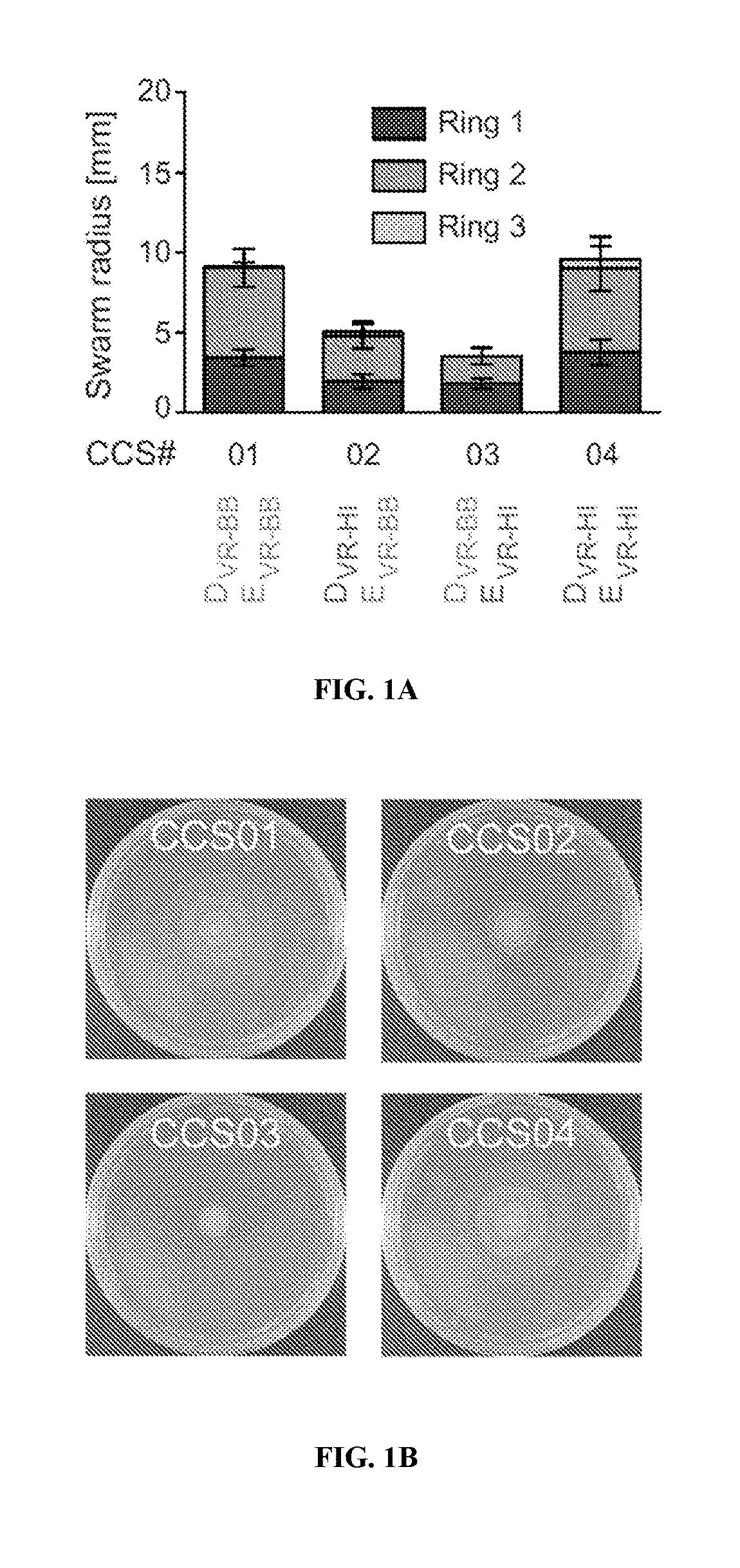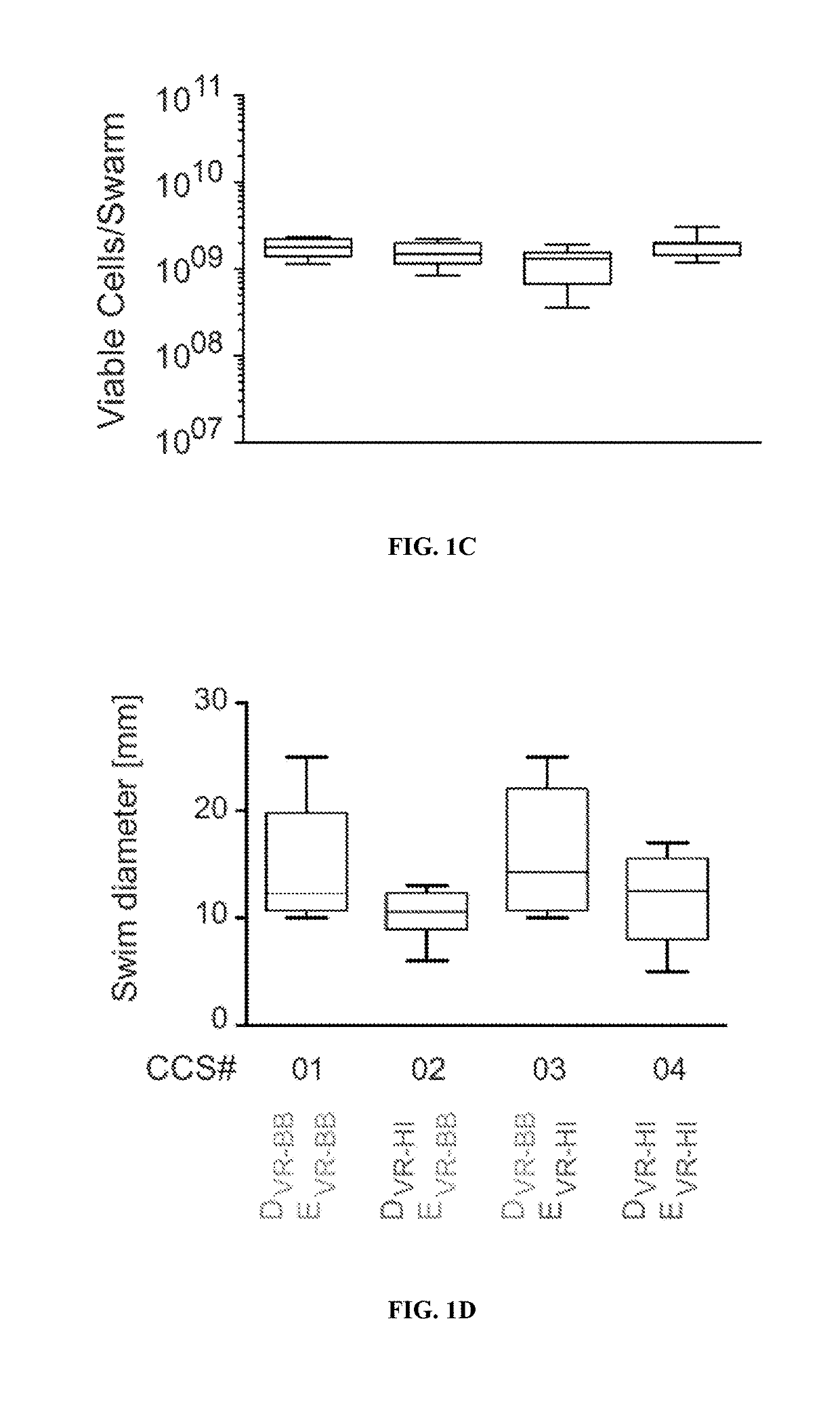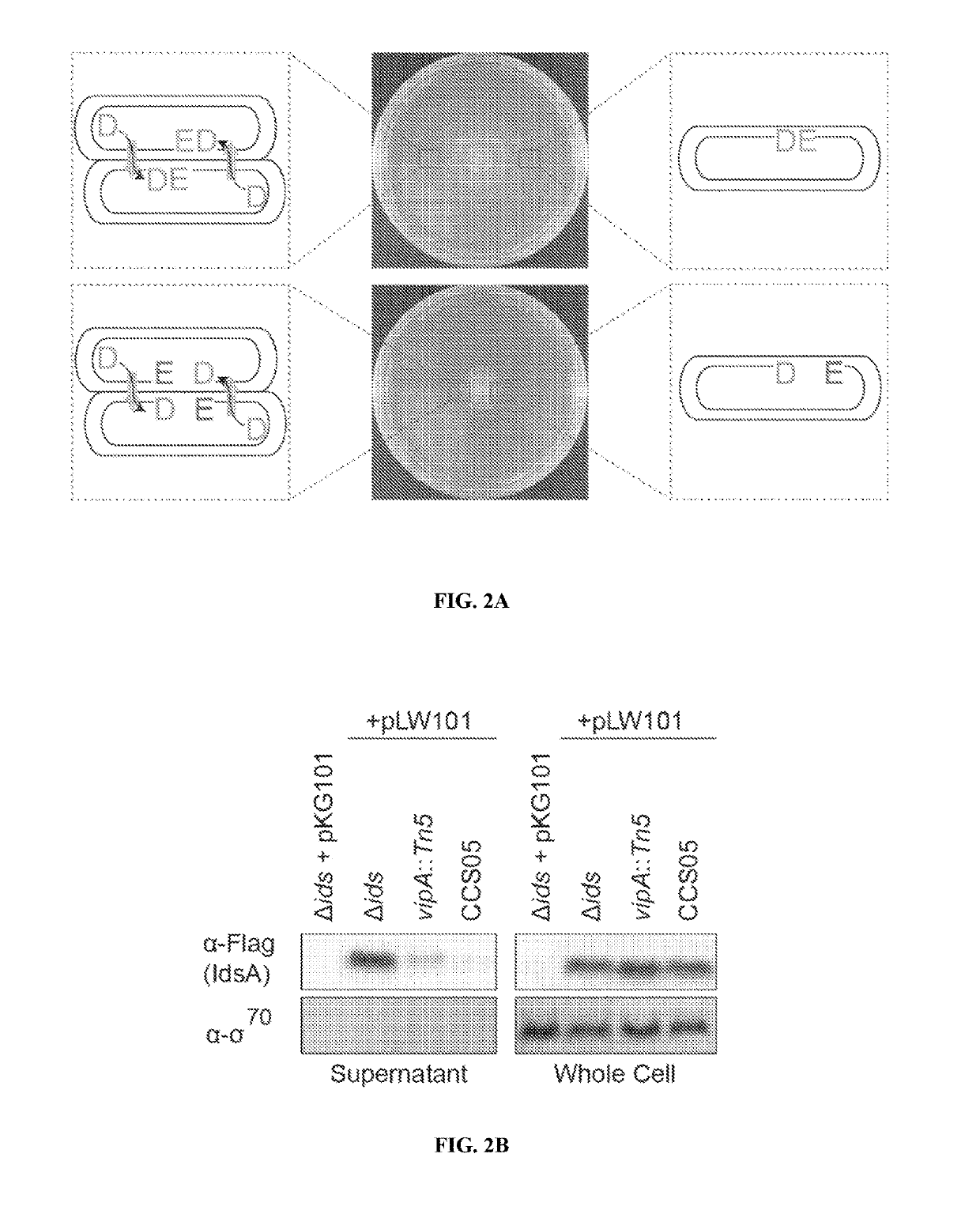Treating infections using idsd from proteus mirabilis
a technology of proteus mirabilis and idsd, which is applied in the direction of bacteria material medical ingredients, antibacterial agents, peptide/protein ingredients, etc., can solve the problem of negative impact on the expansion of swarm colonies, and achieve the effect of reducing bacterial growth and/or swarming, and reducing the occurrence of urinary tract infections
- Summary
- Abstract
- Description
- Claims
- Application Information
AI Technical Summary
Benefits of technology
Problems solved by technology
Method used
Image
Examples
example 1
te IdsD-IdsE Pairs Cause Restricted Swarm Colony Expansion but not Reduced Viability or Apparent Swarmer Cell Differentiation
[0151]Swarming colonies of P. mirabilis strain BB2000 carrying mutations in the variable regions (VRs) encoded by the ids operon appear unusually small in diameter (31). To investigate effects of Ids-mediated self-recognition on swarm colony expansion, these P. mirabilis strains, which are genetically identical except for the VRs in IdsD and IdsE, were utilized. The VRs either originated from wild-type strain BB2000 (VR-BB) or from wild-type strain HI4320 (VR-HI). The ids operon, including the genes for IdsD and IdsE, was maintained on a low-copy number plasmid under control of the native promoter in the / lids strain, which is a BB2000-derived strain lacking the chromosomal copy of the ids locus (2). This complemented Aids strain and its derivatives are the standard tools for studying the Ids system (2, 5, 31).
[0152]To determine the cellular locations of IdsD a...
example 2
unicates Identity Between Neighboring Cells
[0155]There are two prevailing mechanistic models for where the causative in vivo interactions between IdsD and IdsE may occur. IdsD and IdsE binding could happen between neighboring cells (FIG. 2A, left panel) or within a single cell (FIG. 2A, right panel). To distinguish between these models, whether IdsD export is necessary for its function was examined. The Aids-derived strain deficient in T6SS-mediated transport (CCS05) was used. CCS05 carries a mutation in vipA; the encoded protein, VipA [T6SS_VipA (PF05591)], is essential for export of T6SS-related factors (11, 33, 34). To confirm loss of T6SS mediated transport, IdsA [T6SS_Hcp (PF05638)] carrying a C-terminal FLAG epitope tag (5) was introduced into CCS05. Export of Hcp homologs, such as IdsA, is a hallmark of T6SS dependent protein transport and has often been used to evaluate T6SS activity (5, 8, 9, 11, 26, 35). Further, the export of IdsD is dependent on a functional T6SS and is ...
example 3
ons Between Transferred IdsD and Resident IdsE Impact Swarm Colony Expansion
[0161]It was hypothesized that the transfer of IdsD might be sufficient to induce impaired swarm colony expansion. This hypothesis was interrogated by examining the swarm colony expansion of 1:1 mixtures of two strains, resulting in co-swarms. Strain CCS06 (lacking IdsE) was co-swarmed with the nearly isogenic CCS05-derived recipient strain lacking both IdsE and a functional T6SS. A 1.75-fold decrease in expansion of the co-swarm colony as compared to that of a monoculture swarm of the recipient strain (FIG. 3A) was observed. These results indicate that transfer of IdsD to recipient cells restricted swarm colony expansion.
[0162]It was further hypothesized that transfer of IdsD and its resulting binding state with IdsE in the recipient cell determines whether swarm colony expansion is restricted or not. Therefore, CCS06 as a donor of DVR-BB was used in 1:1 mixtures with CCS05-derived (export-inactive recipien...
PUM
| Property | Measurement | Unit |
|---|---|---|
| w/w | aaaaa | aaaaa |
| thickness | aaaaa | aaaaa |
| thickness | aaaaa | aaaaa |
Abstract
Description
Claims
Application Information
 Login to View More
Login to View More - R&D
- Intellectual Property
- Life Sciences
- Materials
- Tech Scout
- Unparalleled Data Quality
- Higher Quality Content
- 60% Fewer Hallucinations
Browse by: Latest US Patents, China's latest patents, Technical Efficacy Thesaurus, Application Domain, Technology Topic, Popular Technical Reports.
© 2025 PatSnap. All rights reserved.Legal|Privacy policy|Modern Slavery Act Transparency Statement|Sitemap|About US| Contact US: help@patsnap.com



